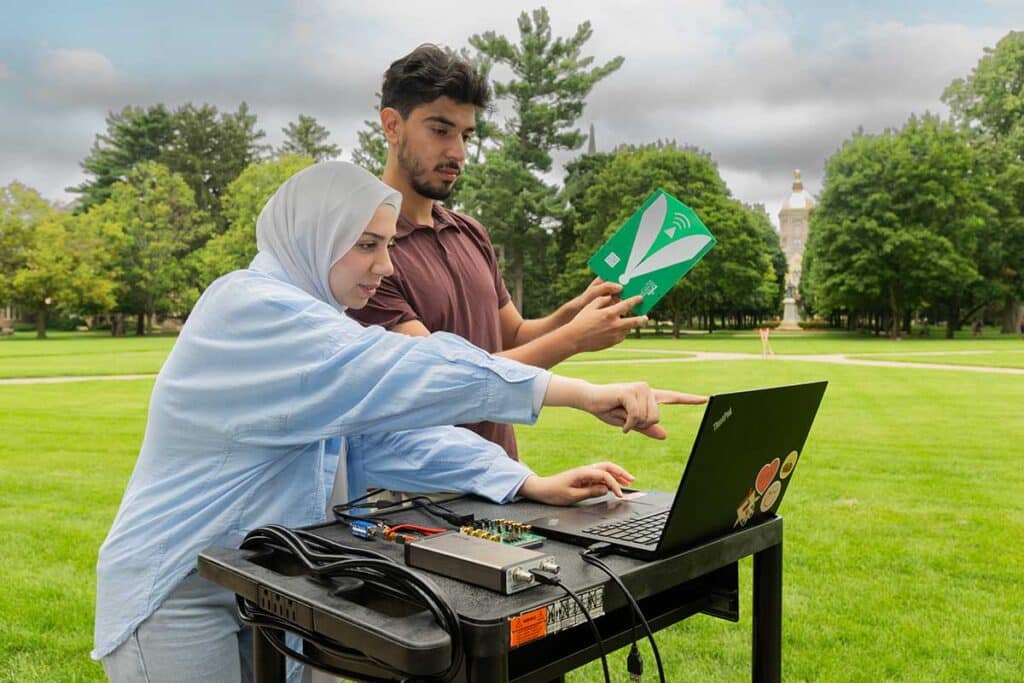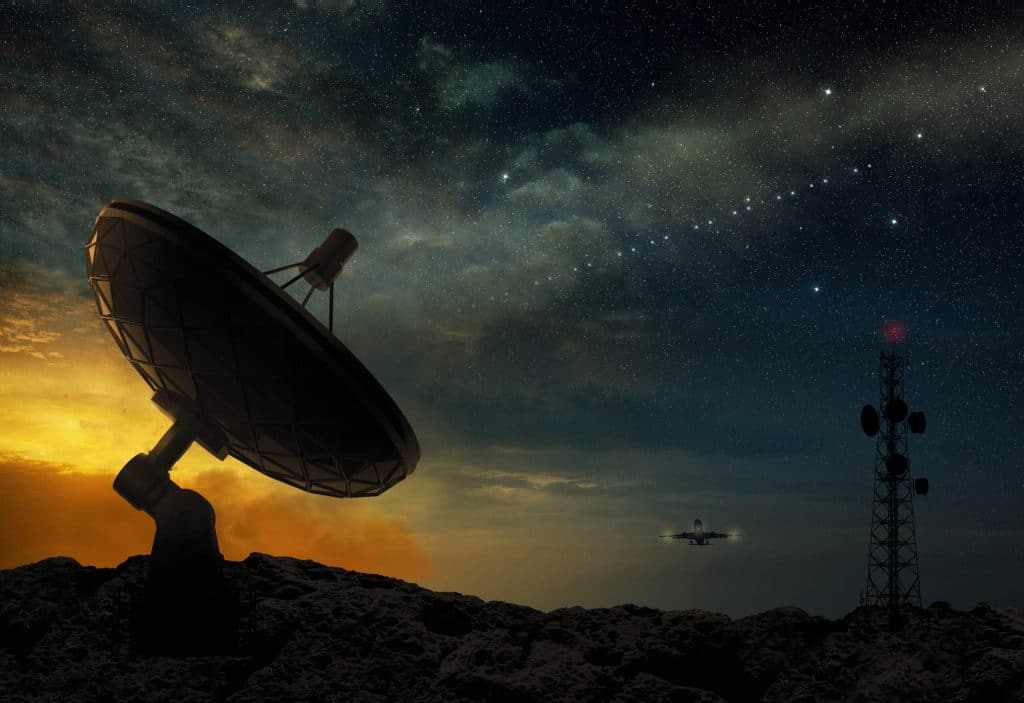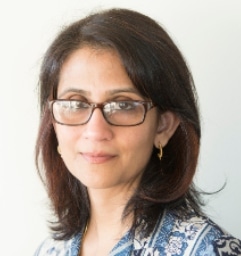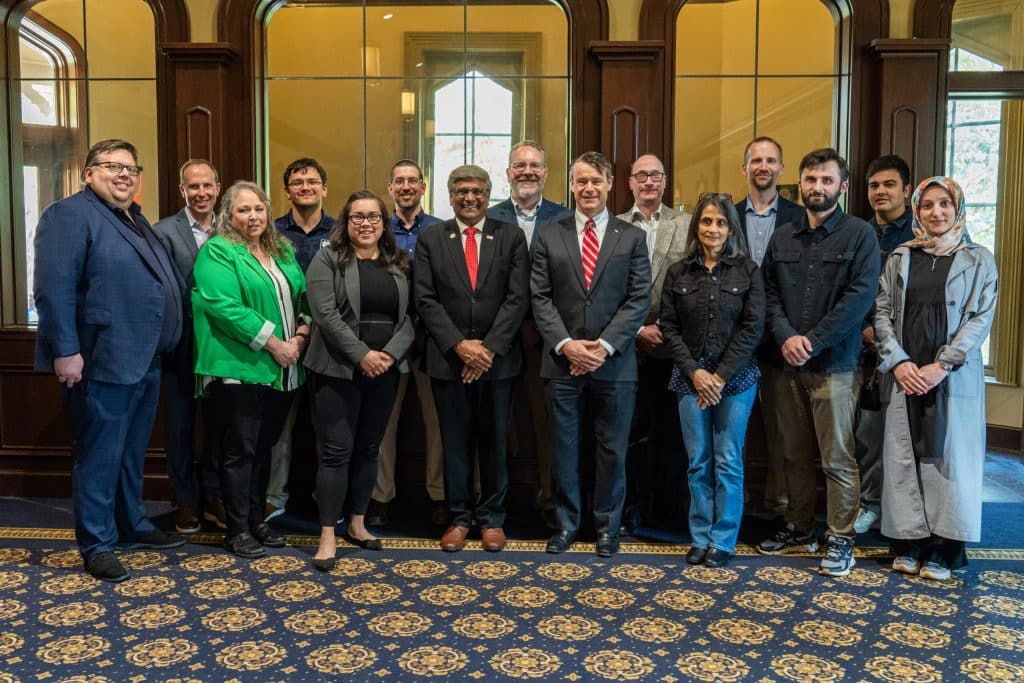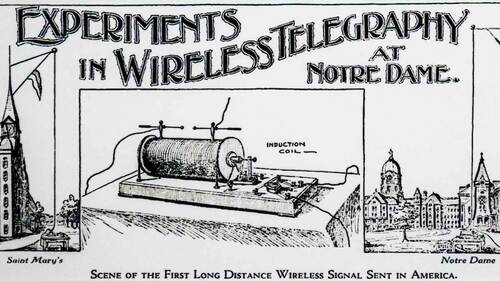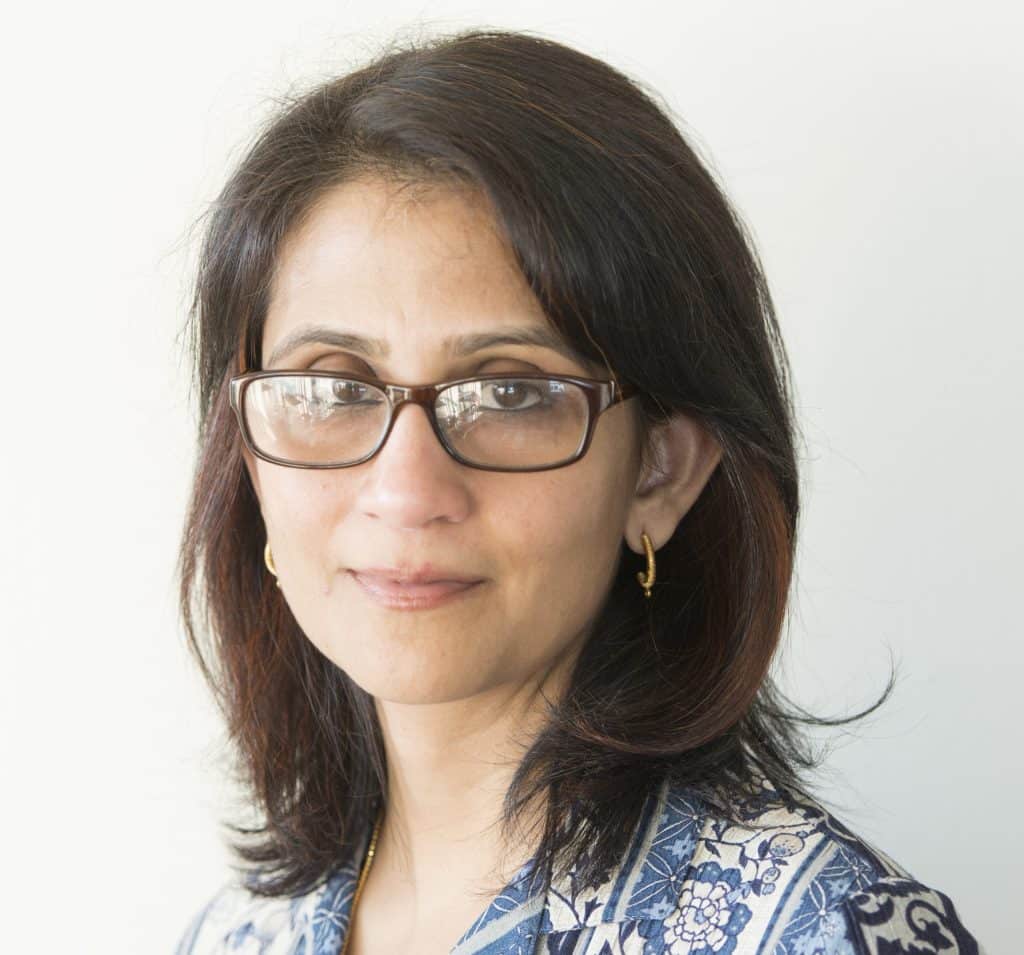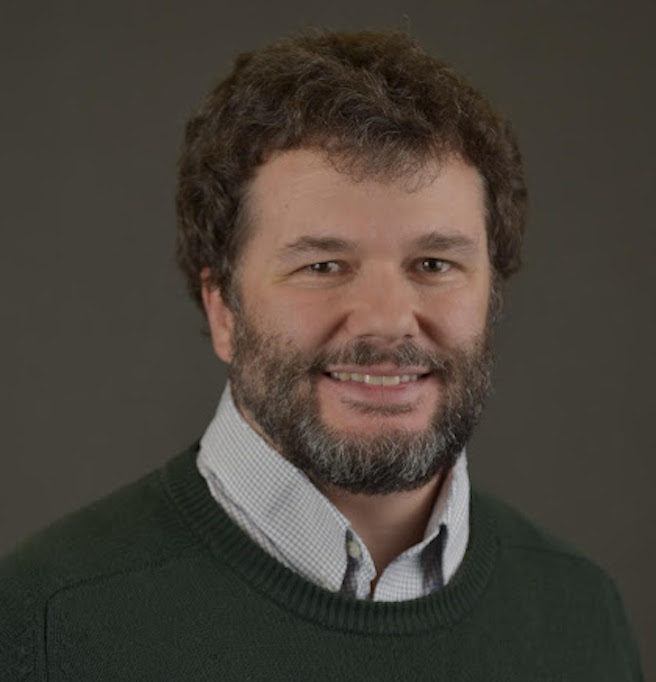The Latest News from spectrumx
News
Stay updated with the latest developments in research and innovation. From groundbreaking scientific discoveries to research-focused headlines, our news section keeps you informed on stories that matter.
Today, SpectrumX, the U.S. National Science Foundation (NSF) Spectrum Innovation Center, released a set of introductory videos as part of its Radio Frequency Systems and Applications courseware. All video content […]
U.S. National Science Foundation (NSF) SpectrumX is pleased to announce that IEEE International Symposium on Dynamic Spectrum Innovation (DySPAN) 2025 has accepted multiple papers and tutorials authored by its expert center members.
Globally, two billion people use fifth-generation (5G) wireless networks. But the rollout of 5G technology has also come with a steep energy cost.
U.S. National Science Foundation (NSF) SpectrumX is excited to invite undergraduate students interested in wireless and radio frequency research to participate in its Research Experiences for Undergraduates (REU+) program this summer.
Neil Jacobs has been named a 2025 Fellow of the American Meteorological Society (AMS). Jacobs is a SpectrumX External Advisory Board (EAB) member and the Chief Science Advisor for the […]
Science and Technology Policy Fellowships Open for Applications – Science groups seeking science policy fellows:
Collaboration and broadening participation are two core elements of the SpectrumX center’s activities. Member institutions of SpectrumX, the U.S. National Science Foundation (NSF) Center for Spectrum Innovation, have opportunities to work with one another in ways that may not have been possible before the center was established. This summer, a graduate student from the University of Puerto Rico Mayaguez (UPRM) and member of the Center for Advanced Radio Sciences and Engineering (CARSE), traveled to the University of Virginia (UVA) to continue research on radio frequency (RF) engineering, addressing challenges in the electromagnetic spectrum that support 5G cellular and broadband communications
Members of the Center for Advanced Radio Sciences and Engineering (CARSE) at the University of Puerto Rico, Mayagüez (UPRM), and SpectrumX, the U.S. National Science Foundation Spectrum Innovation Center, traveled to Italy this week to present their research.
Researchers at the University of Notre Dame have been awarded a three-year, $1.5 million, grant from the U.S. National Science Foundation (NSF) to develop a data platform to enable measurements and experiments in the electromagnetic spectrum. These measurements will contribute to academic and industry stakeholders’ research to drive spectrum sharing policy in existing bands, such as 3-4 GHz, as well as potential new bands, such as 7-8 GHz.
Spectrum Innovation Centers SMART Hub (https://spectrumsmart.org) and SpectrumX (https://spectrumx.org) are teaming up to present a workshop entitled “Radio Spectrum for Microwave Practitioners” at the IEEE MTT-S International Microwave Symposium in Washington, D.C., on Monday, June 17. Organizers are Charles Baylis, Ph.D., Director of SMART Hub, Baylor University, and Andy Clegg, Spectrum Engineering Lead, Google.
On Thursday, April 25, Sethuraman Panchanathan, director of U.S. National Science Foundation (NSF), joined U.S. Senator Todd Young in a visit to the campus of the University of Notre Dame. The pair met with faculty, students, and University leaders and discussed how research and innovation can drive better policymaking, grow the local economy, and contribute to national security. Senator Young explained, "As I travel around the state, I am inspired by the quality of students and the quality of research at our universities—and we have that at Notre Dame. Some of the best research in the country is happening here.
Every day, people use mobile devices to communicate, stream video, check the weather, navigate, play games, and use thousands of other apps. Only in the most recent decades have these technologies become more accessible. Wireless technology also underlies radio astronomy, satellites, television and radio broadcasting, geolocation and navigational services, and remote sensing. The original experiments that made the wireless services used every day are not as old as some might think. In fact, it was just 125 years ago that the first known long-range wireless transmission in the United States was made on the campus of the University of Notre
The University of Notre Dame is celebrating 125 years of wireless research, education and innovation with a modern re-enactment of one of the first long-range wireless transmissions conducted in the United States and a full-day symposium of panels and lab tours on Friday (April 19). On April 19, 1899, Jerome Green, a professor in the University’s electrical department, transmitted a wireless message from Notre Dame’s Basilica of the Sacred Heart to Saint Mary’s College — known as Saint Mary’s Academy at the time — more than a mile away.
Today, the U.S. National Science Foundation (NSF) Spectrum Innovation Center, SpectrumX, announces its new partnership with the Wireless Innovation Forum, or WInnForum. Through this partnership, WInnForum has joined NSF SpectrumX’s Collaboration Advisory Board (CAB), through which its leadership will provide industry perspectives on the center’s research, policy outreach, and educational activities. SpectrumX has also joined WInnForum, enabling its researchers from 30 member institutions to contribute to WInnForum working groups, task groups, and special interest groups.
Monisha Ghosh, professor of electrical engineering at the University of Notre Dame, testified on Thursday (March 21) before the U.S. Senate Committee on Commerce, Science and Transportation on the topic of “Spectrum and National Security.” The hearing, chaired by U.S. Sen. Maria Cantwell of Washington, focused on the critical need for a “coordinated and comprehensive approach to domestic spectrum policy,” believed to be critical to U.S. national security. The committee sought opinions from experts on countering international threats and ways to ensure “the United States leads in spectrum use policy that protects the nation’s critical national security and economic competitiveness
The second annual U.S. National Science Foundation (NSF) Spectrum Week is open for registration. This year, NSF Spectrum Week will be hosted May 13-17, 2024, in Arlington, Virginia. It will bring together six major spectrum events and create an even bigger opportunity for cross-collaborations than its first year in 2023. The collaborative organizational effort is again being led by SpectrumX, an academic hub where all spectrum innovators come together to innovate, collaborate, and contribute to the advancement of radio spectrum resources and sciences.
In January 2024, the National Radio Science Meeting celebrated its 50th anniversary. Twelve members of the SpectrumX, the National Science Foundation Spectrum Innovation Center, including two of the center’s students, were in attendance to further national conversations about radio science, telecommunications and electrical engineering. The meeting, hosted by the U.S. National Committee (USNC) of the International Union of Radio Science (URSI) and the National Academies of Science, Engineering and Medicine, took place from January 9-12, and resulted in the discussion of 12 research papers co-authored by SpectrumX members.
In November 2023, the National Telecommunications and Information Administration (NTIA) put out a request for information on the Implementation Plan for the National Spectrum Strategy (NSS). Seventy-five spectrum stakeholders responded to the request, including NSF SpectrumX, the U.S. National Science Foundation’s (NSF) Spectrum Innovation Center.
The Massachusetts Institute of Technology (MIT) has announced that Philip Erickson was named the director of the MIT Haystack Observatory, effective January 1, 2024. Erickson has served as the Observatory’s associate director and geospace lead scientist since 2020. Erickson is a founding member and research partner of the National Science Foundation’s (NSF) SpectrumX, an NSF Spectrum Innovation Center. Erickson participated in Project Teams (PT) for Sensing and Data, as well as Working Groups (WG) in Policy and Economic Policy Research.
Over the summer of 2023, the University of California, Los Angeles (UCLA) hosted three SpectrumX-sponsored students in its National Science Foundation (NSF) research experience for undergraduate (REU) program. These students were paired with graduate students to pursue research in the electrical and computer engineering field and were guided through the process researchers take from project formation to presentation throughout the 10-week program.



